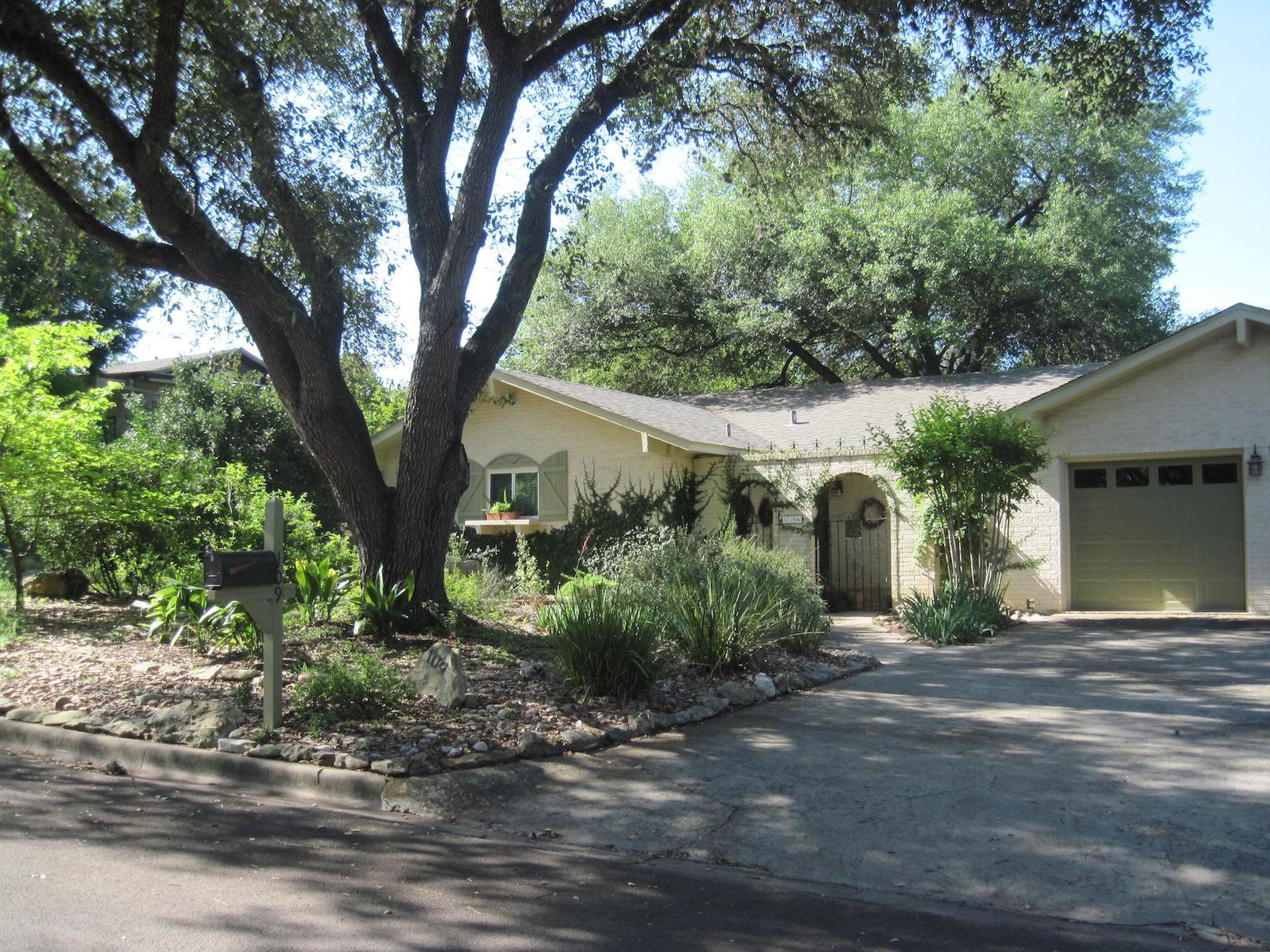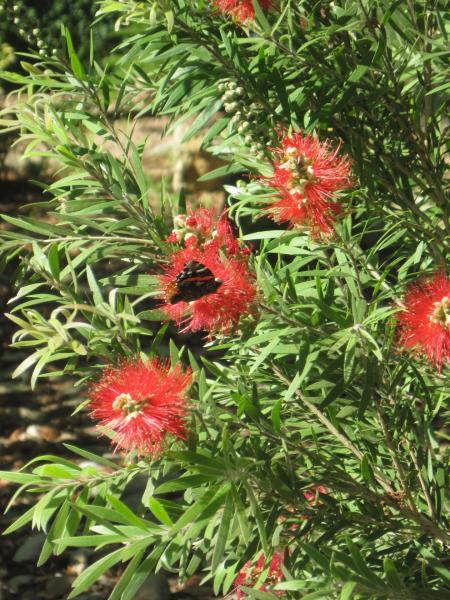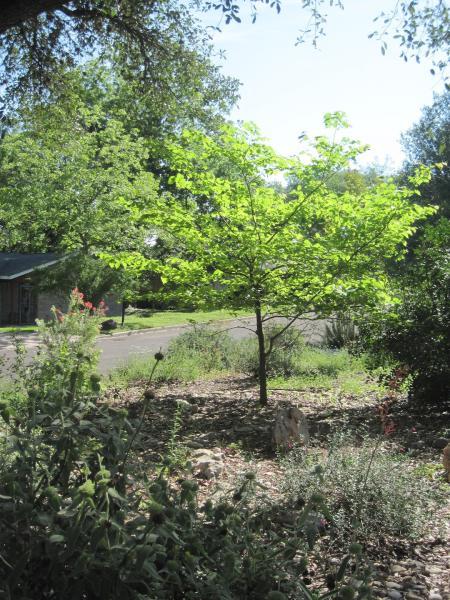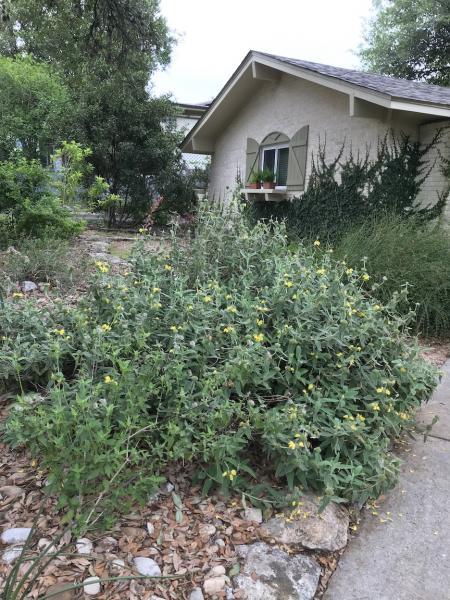
With sustainable native and adaptive plantings and a large oak in the front yard, the Grunings home on Chaparral Street is the Spring Lake Garden Club's May Yard of the Month. Photos courtesy of the Spring Lake Garden Club
Low Maintenance & Thriving
“I got tired of watering a lawn.” This confession may be one of the simplest reasons to transform a front yard into a more sustainable landscape, homowners Terry and Peter Gruning wanted more than just low maintenance.
Exchanging turf grass for an attractive landscape that benefits pollinators and invites admiration from neighbors requires choosing plants for a specific environment. The Grunings have not only succeeded in freeing themselves from an endless cycle of watering and mowing, they have also filled their landscape with sustainable native and adapted plants that offer variety and color without endless maintenance. Their exceptional yard is Spring Lake Garden Club’s yard of the month for May 2020.

A red bottlebrush, native to Australia, attracts butterflies and other local pollinators.
The Grunings moved into their home on Chaparral Street in San Marcos in 2004 and in 2012 decided to change course on their traditional front yard, which included a large oak tree and several crape myrtles. Peter planned the placement of new trees — a Texas redbud, two red crape myrtles and a mountain laurel — and dug planting holes. He also prepared sites to place boulders delivered by Espinosa Stone, which also provided river rocks for the landscape.
“Placing the rocks was lots of work but worth the effort,” said Terry. "We worked together trying to find plants which would work in our heat.”
Supplemental watering ensures that new plants get a good start, but once established they need little if any additional irrigation.

A redbud tree claims its place in the morning sun but enjoys some afternoon shade from the yard's large oak tree.
Leaves from the huge oak tree are a continuing source of mulch, so “clean-up” means raking this natural cover to areas that need protection, and adding any extra leaves to compost. Terry bought many plants for the new landscape, but quickly learned that propagation from cuttings and divisions was a wise way to fill out planting areas. “Root hormone is essential to success,” she explains. For reliable color to attract pollinators, Terry chose red Texas sage and bright yellow Jerusalem sage as well as firecracker plant, shrimp plant and bottlebrush. Propagated plants include red yucca, plumbago and yarrow, now showing umbrels of tiny white flowers. Passalong plants from friends are also welcomed into the garden: dwarf Mexican petunias are ignored by deer and cast iron plants thrive under the oak tree, along with small succulents surviving from the original landscape.
The Gruning’s front yard is edged by hardy hedges: a line of crape myrtle on one side and cenizo shrubs on the other beside the garage driveway. A layer of gray river stones under the cenizo mirror the leaf color and deter weeds, but Terry is still looking for a reliable ground cover beyond the cenizo in this shady area. Such is the challenge and joy of a complex natural landscape — finding the right plant for any particular place and then reaping the reward of seeing it thrive without special care.

Bright yellow blossoms cover a sun-loving Jerusalem sage from spring until early summer beside the Grunings entry sidewalk.
As a side note, the Spring Lake Garden Club would like to highlight The Austin-American Statesman recently cited an online source for environmentally-friendly gardens as recommended Hays County Master Gardener and San Marcos resident Marilyn Love. Lists of native and adaptive plants for different ecoregions of Texas may help homeowners choose the most successful plants for their yards. For moreinformation. go to aggie-horticulture.tamu.edu/earthkind.











